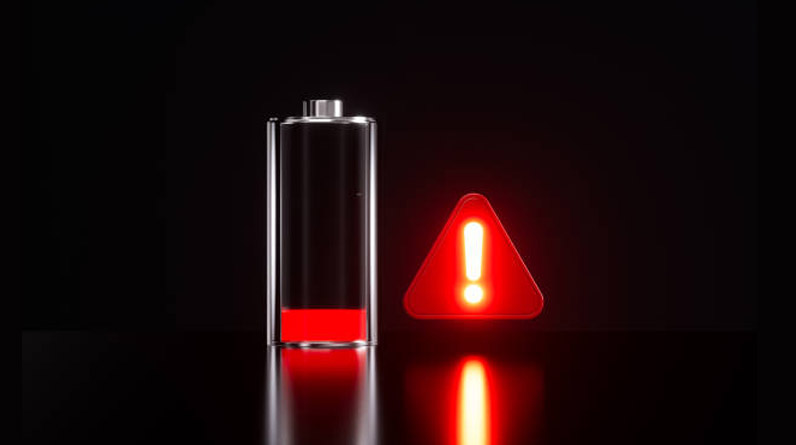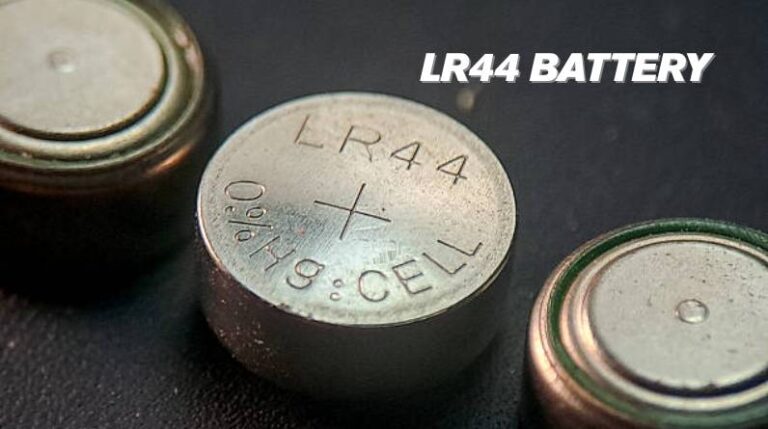Walk into any electronics store, and you’ll encounter dozens of tiny button batteries with cryptic labels. Among them, the LR44 battery stands out as one of the most versatile and commonly used power sources for small devices. Yet despite its popularity, many consumers struggle with basic questions: Which equivalent should I buy? Why do some LR44 batteries cost three times more than others? How can I tell if I’m getting the right battery for my device?
This comprehensive guide cuts through the confusion, helping you make informed decisions about purchasing, using, and maintaining LR44 batteries. Whether you’re replacing a battery in your child’s toy or powering critical medical equipment, understanding the nuances of LR44 batteries can save you money and frustration.
What Makes the LR44 Battery Special?
The LR44 is an alkaline button cell battery that has earned its place as an industry standard through decades of reliable performance. Its compact design packs impressive power into a small package, measuring just 11.6mm in diameter and 5.4mm in height. This combination of size and capability makes it ideal for hundreds of applications.
At its core, the LR44 operates through a chemical reaction between zinc and manganese dioxide, producing a steady 1.5 volts of electrical energy. The alkaline chemistry provides several advantages:
- Long shelf life: Properly stored LR44 batteries maintain their charge for several years
- Wide temperature tolerance: Functions reliably from -10°C to 60°C
- Stable discharge curve: Delivers consistent power throughout most of its lifespan
- Cost-effectiveness: More affordable than silver-oxide alternatives
Technical Specifications That Matter
Understanding specifications helps you match the right battery to your device’s needs. Here’s what the numbers actually mean in practical terms:
| Specification | Value | Why It Matters |
|---|---|---|
| Nominal Voltage | 1.5V | Ensures compatibility with device requirements |
| Capacity | 110-150mAh | Determines how long the battery will last |
| Discharge Rate | 300µA | Indicates suitability for continuous vs. intermittent use |
| Weight | 2 grams | Important for weight-sensitive applications |
| Operating Temperature | -10°C to 60°C | Defines where the battery can reliably function |
The capacity range of 110-150mAh varies by manufacturer. Premium brands like Energizer and Duracell typically deliver capacities at the higher end of this spectrum, justifying their premium pricing through extended runtime.
Decoding the LR44 Equivalent Maze
One of the most confusing aspects of LR44 batteries is the bewildering array of equivalent designations. The same battery might be labeled LR44, AG13, A76, or 157 depending on the manufacturer. This isn’t arbitrary—understanding these categories helps you make better purchasing decisions.
True Equivalents: Perfect Substitutes
These batteries are identical to LR44 in every meaningful way and can be used interchangeably:
- AG13: Generic designation commonly found in bulk packages
- A76: Energizer’s preferred labeling
- 76A: Duracell’s equivalent designation
- LR1154: Alternative IEC designation
- L1154: Another variant of the same standard
Pro Tip: These equivalents offer identical performance, so choosing the least expensive option makes perfect sense for most applications.
Silver-Oxide Alternatives: Premium Performance
These batteries share the same physical dimensions but use different chemistry:
- SR44: Standard silver-oxide equivalent
- SR44W: High-drain silver-oxide version
- SR44SW: Low-drain optimized variant
- 357: Popular silver-oxide designation
- 303: Another silver-oxide equivalent
Silver-oxide batteries cost more but deliver superior performance for specific applications. They maintain voltage stability better than alkaline batteries, making them ideal for precision instruments like analog watches and medical devices. The stable 1.55V output doesn’t drop gradually like alkaline batteries, ensuring consistent device performance until the battery is nearly depleted.
When Chemistry Matters
| Battery Type | Best For | Avoid For |
|---|---|---|
| Alkaline (LR44) | Toys, flashlights, calculators, intermittent use devices | Precision instruments requiring stable voltage |
| Silver-Oxide (SR44/357) | Watches, medical equipment, cameras, continuous low-drain devices | High-drain devices where cost matters more than longevity |
| Zinc-Air (675) | Hearing aids, devices requiring extended capacity | General electronics (voltage too low at 1.4V) |
Smart Buying Strategies for LR44 Batteries
The battery aisle presents a paradox: identical-looking batteries with vastly different prices. A 20-pack of generic LR44 batteries might cost less than a 2-pack from a premium brand. How do you make the right choice?
Price vs. Value Analysis
Consider the total cost of ownership rather than just the sticker price:
- Premium brands (Energizer, Duracell): Cost 2-3x more but deliver 30-40% longer runtime and better storage stability. Worth it for critical applications or infrequently replaced batteries.
- Mid-tier brands (Panasonic, Sony, Murata): Offer excellent balance of performance and value. Often manufactured in the same facilities as premium brands with minimal performance difference.
- Generic/bulk batteries: Suitable for high-volume, non-critical applications where frequent replacement isn’t inconvenient.
Avoiding Counterfeit and Expired Batteries
The LR44 market has a counterfeit problem. Follow these guidelines to ensure you’re getting legitimate batteries:
- Purchase from reputable retailers with established supply chains
- Check expiration dates—quality batteries should have 3-5 years of shelf life remaining
- Examine packaging for professional printing and proper spelling
- Be skeptical of deals that seem too good to be true
- Test new batteries immediately; counterfeit batteries often measure low voltage from the start
Maximizing Battery Life and Performance
Getting optimal performance from LR44 batteries requires more than just proper installation. These strategies can significantly extend battery life:
Proper Installation Techniques
Incorrect installation is a leading cause of premature battery failure:
- Identify polarity correctly: The flat side with printing is positive (+); the side with a small circular protrusion is negative (-)
- Clean the contacts: Use isopropyl alcohol on a cotton swab to remove oxidation from battery compartment contacts
- Check retention tabs: Ensure metal tabs aren’t bent or damaged, as this affects electrical contact
- Avoid mixing old and new: When devices use multiple batteries, replace them as a complete set
Storage Best Practices
Proper storage extends shelf life and maintains performance:
- Store in original packaging until needed to prevent accidental short-circuits
- Keep in cool, dry locations (ideal temperature: 15-25°C)
- Avoid refrigerator storage—contrary to popular belief, it offers no benefit and can cause condensation damage
- Keep away from metal objects that could bridge terminals
- Store batteries horizontally rather than standing on end
Troubleshooting Common LR44 Battery Problems

Problem: Battery Drains Quickly
Possible causes:
- Device has excessive current draw (check for malfunction)
- Using alkaline battery in application better suited for silver-oxide
- Poor contact causing intermittent connection and increased drain
- Expired or low-quality battery
Solutions: Test with a known-good battery from a reputable brand. If problem persists, the device may require servicing.
Problem: Corrosion or Leakage
Possible causes:
- Battery left in device for extended periods without use
- Exposure to temperature extremes or humidity
- Using damaged or expired batteries
Solutions: Clean affected areas with white vinegar or isopropyl alcohol using a cotton swab. For severe corrosion, use a small wire brush. Always remove batteries from devices during long-term storage.
Problem: New Battery Shows Low Voltage
Possible causes:
- Counterfeit or low-quality battery
- Battery was stored improperly before purchase
- Battery is past expiration date
Solutions: Test with a multimeter—genuine LR44 should read 1.5-1.6V when fresh. Return defective batteries to retailer.
Real-World Applications and Device-Specific Recommendations
Different devices have different power requirements. Here’s what works best:
For Watches
Use silver-oxide (SR44/357) batteries for analog watches requiring precise timekeeping. The stable voltage prevents time drift. Alkaline LR44 works fine for digital watches with less demanding requirements.
For Children’s Toys
Alkaline LR44 batteries offer the best value. Buy in bulk and choose mid-tier or generic brands. Consider rechargeable alternatives for frequently used toys, though direct rechargeable LR44 equivalents are rare.
For Medical Devices
Always use premium alkaline or silver-oxide batteries from recognized brands. Medical devices like glucose meters and digital thermometers require reliable power for accurate readings. Never compromise on quality for critical health applications.
For Laser Pointers and LED Lights
These high-drain devices benefit from premium alkaline batteries with higher capacity. Expect shorter runtime compared to low-drain applications.
Environmental Considerations and Responsible Disposal
LR44 batteries contain materials that shouldn’t enter landfills. Alkaline batteries contain zinc, manganese, and potassium hydroxide, which can contaminate soil and groundwater.
Responsible disposal options:
- Use local battery recycling programs available at many retail stores
- Check with municipal hazardous waste facilities
- Participate in manufacturer take-back programs where available
- Store used batteries in a sealed container until you can properly recycle them
Never throw button batteries in regular trash, and keep them away from children and pets—they pose serious ingestion hazards.
The Future of Button Cell Batteries
Battery technology continues to evolve. Emerging developments relevant to LR44 users include:
- Solid-state batteries: Promise higher energy density and improved safety
- Biodegradable batteries: Research into eco-friendly alternatives is progressing
- Improved alkaline formulations: Manufacturers are incrementally improving capacity and shelf life
- Smart batteries: Future button cells may include built-in charge indicators
Final Recommendations
Making the right LR44 battery choice depends on your specific needs:
- For everyday devices: Mid-tier alkaline batteries offer the best value
- For critical applications: Invest in premium alkaline or silver-oxide batteries
- For precision instruments: Choose silver-oxide variants for stable voltage
- For bulk needs: Generic alkaline batteries work fine when purchased from reputable sources
Remember that the cheapest battery isn’t always the best value, but the most expensive isn’t always necessary either. Match the battery quality to the application’s importance, and you’ll find the optimal balance of performance and cost.
By understanding LR44 specifications, equivalents, and best practices, you can make informed decisions that save money while ensuring your devices operate reliably. Whether you’re replacing a battery in a watch, toy, or medical device, this knowledge empowers you to choose wisely and get the most from these tiny powerhouses.
Looking for well-researched content and timely updates? Keep visiting VIPLeague.

